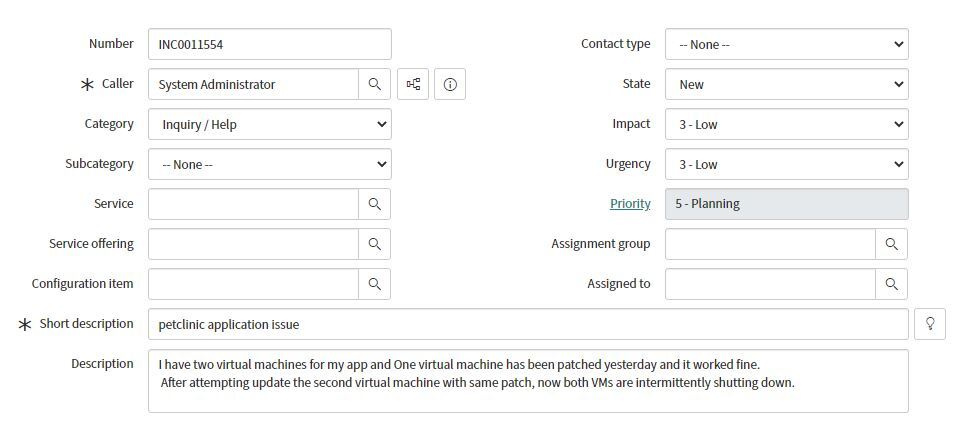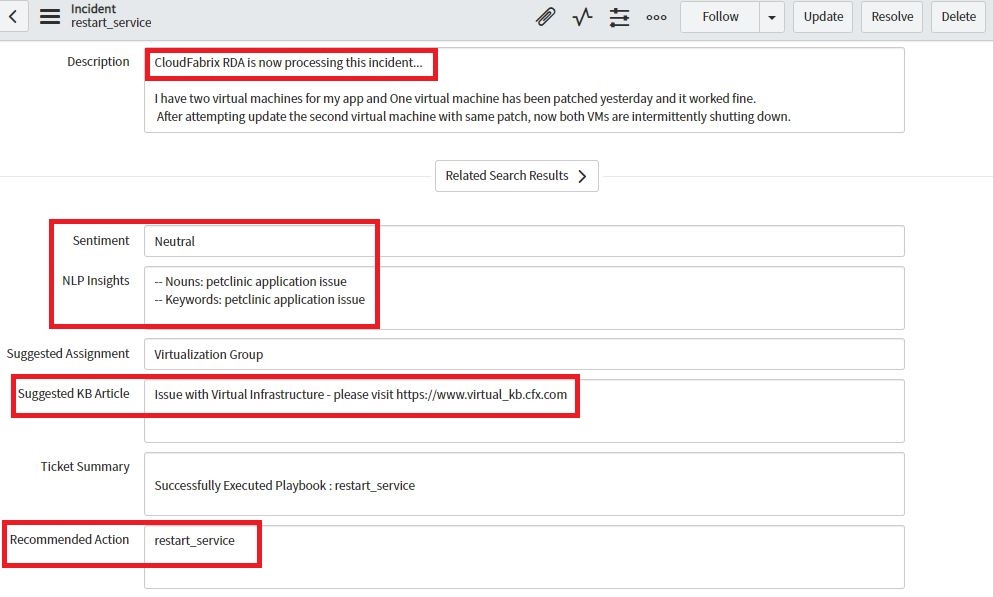What is NLP
Natural Language Processing is a specialized subdomain of Machine Learning which is generally concerned with the interactions between the human and machine using a human verbal or written language.
NLP helps in processing huge volumes of text which would take a significant amount of time for a human to comprehend and process otherwise. Hence a lot of organizations take advantage of NLP to gain useful insights out of their text and free formatted data.
Using NLP on ITSM
Utilizing NLP on ITSM provides a lot of benefits for an organization since they generate huge volumes of data that essentially captures the health, performance and experience of the enterprise critical assets. The type of data ITSM team generally deals with is Change request, incidents, KB articles, emails and chats. In some cases organizations also use social media channels to monitor/keep track of any issues/complaints that arise for their products.
So out of all these data used in ITSM the common thing amongst all these is that they are text data and they are all unstructured as well. Utilizing NLP for this kind of data yields good results and ITSM gains better productivity and for quicker resolution of issues.
NLP Capabilities:
NLP helps in processing the machine generated text and the user generated text with the help of multiple machine learning methods/capabilities to get meaningful results from the data.
The most commonly used NLP methods are:
- Symptom clustering
- Classification
- Supervised classification
- Unsupervised classification
- Keywords Summarization & Categorization
- Entity (Custom) recognition and extraction
- Sentiment Analysis
Top 3 NLP Use Cases of CloudFabrix AIOps Solution
In this blog we will illustrate the benefits NLP can deliver to the ITSM organization through the following three use cases:
- Insights from historical data
- Reducing MTTR and building prediction models using NLP/text processing
- Entity based knowledge & operational data extraction
Use case 1: Insights from historical data
This is one of the most common and important use cases amongst the three use cases.
NLP can be used to unearth hidden insights from the text fields of historical data and pave the way for the transformation and optimization of operations and processes.
Typical data sources used for this are Incidents, change request, KB Articles and Emails. The methods/capabilities used are clustering, keyword extraction, sentiment analysis and custom entity recognition.
Some of the key insights that can be gained from this are
- Ability to find the top problem areas and frequently occurring issues
- Finding opportunities to reduce tickets – correlation/suppression etc
- Gaps in the knowledge base articles
- etc….
How to gain access to the historical data?
The most common method is to use the export feature provided by most ITSM tools like ServiceNow, Jira, Remedy etc and get the data as a csv or excel file. We can also use APIs to access the data.
In the following sample, about 6k+ incident data exported from ServiceNow is used to perform the analysis and gain the insights mentioned here:
Top 10 problem areas: Where are most of the problems/errors occurring on the IT infrastructure. The results are obtained by using clustering algorithms. This analysis will help in focusing more on the problem areas rather than the problem itself. We can dive deeper into this and see if there are any correlations between the tickets which will help in prioritizing and reducing the overall ticket size.
What-if analysis: Once the problem areas are known, we can look at their arrival pattern and see if similar problems are occurring together and if they can be grouped or not. This sort of correlation can help reduce tickets by grouping, deduplication, suppression etc.,
Sentimental analysis: The text data in the incidents, change requests, emails etc can be analyzed and categorized by sentiment – very negative, negative, positive etc. Further drill down of the data with various filters such as business unity, assignment group, geography can provide some critical insights on which areas to focus on to improve the sentiment.
Analysing the KB articles: Another important and critical area is using keywords and entity recognition methods of NLP for the KB articles. This will provide insights on KB article coverage by various key categories like concepts, entities, topics etc. Once you have this information, one can compare this with the problem areas to gain insights on gaps in the KB article coverage.
Use case 2: Reducing MTTR and building prediction models using NLP/text processing
We will again use the historical data which is derived from the ITSM tools like ServiceNow along with the kB articles available in the ITSM tools or external URLs for this use case..
In this use case we will be primarily using classification ( supervised or unsupervised) to predict the next best action based on the context of the incident text data. Typically supervised classification is better suited for predicting assignment groups while unsupervised classification for KB article recommendation. The type of classification model to be used can vary based on the customer environment and the type of data available.
The following example illustrates how classification methods can be used to enrich the incident with contextual data that can help the ITSM teams resolve or triage the incident quickly.

AIOps with NLP technology can provide valuable insights and expedite the incident resolution process.
In the above example as soon as the ticket is created/raised it will be automatically picked by the NLP engine, analyzed and updated with key insights like assignment group, sentiment of the ticket and the suggested KB article..
It can also suggest recommended action to be performed for resolving this issue. We can go a step further and even set up workflow remediation to resolve the issues faster. As the number of incidents increase the accuracy of the model will also increase which helps in bringing down the MTTR.

Use case 3: Entity based Knowledge & Operational Data Extraction (Unstructured to structured data)
This use case can be leveraged to extract critical information from unstructured data and present it in a structured format. This capability can be useful for ITSM teams to quickly understand the situation of the ticket without any subject matter expertise or during migrations.
In this use case we will be using the text processing and custom entity recognition capabilities of NLP.
In the below example a log file attached in the ticket which is very complex is analyzed by the NLP engine for extracting the critical information and presented to the user in one of the predetermined fields of the incident. This makes it easy for the ITSM teams to take action more quickly. The information that needs to be extracted can also be customized by configuring enterprise specific entity dictionaries. .



